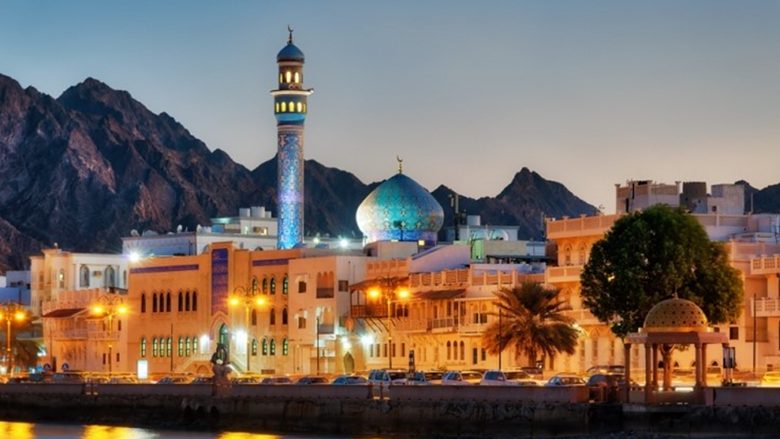Oman makes impressive leap in Global Peace Index

Muscat, The Gulf Observer: Amid the global turmoil and conflicts, the Sultanate of Oman made an impressive leap in the latest 2023 edition of the Global Peace Index (GPI).
According to the 17th edition of the GPI from international think-tank, the Institute of Economics and Peace (IEP), Oman made a jump of 18 places, second largest improvement in the 2023 GPI along with Ivory Coast, just behind Kazakhstan, which improved by 21 places.
Oman is now ranked 48th in the world out of 163 countries with a total of 1.794 score, and third in the MENA region, highlighting the country’s significant improvement amidst the global peace deterioration.
Oman stands out among the MENA region, as it has experienced the most significant improvement in overall peacefulness. The Sultanate climbed 18 places from its previous ranking of 66th last year.
According to the report, Oman’s overall score improved by 6.2 per cent, with the biggest improvement occurring on the militarisation domain.
The report added that Oman also improved considerably on the Safety and Security domain.
Qatar was the most peaceful country in the Middle East and North Africa (MENA), according to the latest GPI 2023. Qatar clinched 21st place on the global ranking, a two-spot increase from last year’s list.
Qatar remains the most peaceful country in the region, a position it has held since 2008. It is the only country in the region to be ranked in the top 25 most peaceful countries globally.
Kuwait was ranked second in the MENA region and 35th globally, while Oman is third. Jordan, and the United Arab Emirates (UAE) rounded out the top five, with Tunisia, Morocco, Algeria, Bahrain, and Saudi Arabia making it in the top ten.
Yemen was the least peaceful country in the Middle East and North Africa region.
The MENA region remained the world’s least peaceful region. While the region saw the greatest improvement in peace, it also has four of the ten least peaceful countries.
The GPI, researched by the Australia-based Institute for Economics and Peace, is the measure of global peacefulness worldwide.
It provides a comprehensive data-driven analysis of peace trends, economic value, and strategies for building peaceful societies. The report assesses each country based on 23 qualitative and quantitative indicators, evaluating their placement across three categories – societal safety and security, ongoing domestic and international conflict, and the degree of the country’s militarisation.
The 2023 report highlighted the continuous decline in global peace. For the ninth consecutive year, the average level of peacefulness deteriorated with 84 countries experiencing improvement and 79 witnessing deterioration. The conflict in Ukraine remains a key driver behind the decline in global peace.
According to the GPI results, the world has become less peaceful over the last 15 years, with the average country score falling by 5 per cent.
According to the index, Europe is the most peaceful region in the world, with seven of the top ten most peaceful countries being European. The Asia Pacific region is home to the other three most peaceful countries.
Iceland maintained its position as the world’s most peaceful country with a score of 1.124, while Denmark displaced Ireland to second place. New Zealand rose two places to fourth, Austria fell to fifth, and Singapore rose four places to sixth.
The report highlights that while countries are spending less on military, many more are now involved in external conflict. The number of people who have died from conflicts around the world in the past year is the highest it has been this century (since the Rwandan genocide) and more than half of the world’s countries (56 per cent) are involved in external conflict, showing just how far conflict has become increasingly international.
In addition to discussing the findings from the 2023 GPI, the report includes analysis of current conflicts and potential future conflicts, including an analysis of the likely economic impact of a Chinese blockade of Taiwan on the global economy.
The total number of conflict-related deaths increased by 96 per cent. Both the deaths from internal conflict and external conflicts fought indicators would have deteriorated even if Ukraine and Russia were excluded from the analysis.
The two indicators with the largest deteriorations in 2022 were conflict-related, external conflicts fought and deaths from internal conflict, followed by political instability. The indicators with the biggest improvement were UN peacekeeping funding and military expenditure.
Of the 23 GPI indicators, ten recorded an improvement, 11 had a deterioration, and two recorded no change over the past year.
The largest deterioration occurred on the external conflicts fought indicator, while UN peacekeeping funding had the largest improvement.
Several countries that had experienced serious conflict in the past two decades recorded the largest improvements in peacefulness. Libya, Ivory Coast, and Afghanistan were all ranked amongst the five biggest improvers in peace.
The global economic impact of violence was $17.5 trillion in 2022, equivalent to 12.9 per cent of global GDP, or $2,200 per person.
The war in Ukraine had a devastating economic effect, with the economic impact of violence in Ukraine increased by 479 per cent or $449 billion. This was the largest increase of any country.
Ukraine, Afghanistan and Sudan incurred the highest relative economic cost of violence in 2022, equivalent to 63.1, 46.5 and 39.7 per cent of GDP, respectively.
In the ten countries most affected by violence, the economic cost of violence averaged 34 per cent of GDP in 2022, compared to just 2.9 per cent for the ten least affected countries.


